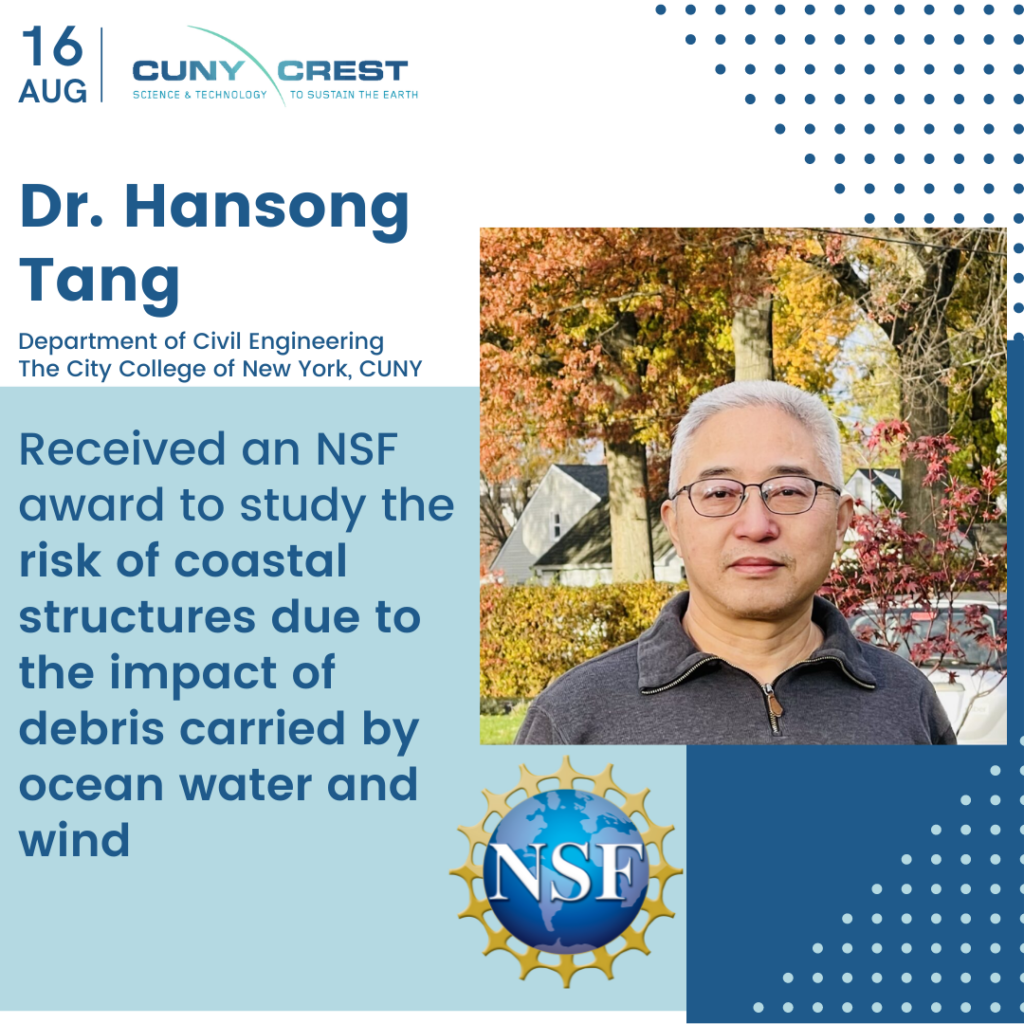Dr. Hansong Tang, received an NSF award to study the risk of coastal structures due to the impact of debris carried by ocean water and wind
Dr. Hansong Tang, faculty in the Civil Engineering department at The City College of New York and CUNY CREST Institute, has received an NSF award to study the risk of coastal structures due to the impact of debris carried by ocean water and wind, such as during hurricanes and tsunamis (Collaborative research: Damage assessment of coastal structures subject to waterborne debris impact under extreme wind and wave conditions, $245,616, CMMI, Sept. 2022—Aug., 2025). This project is multidisciplinary research conducted at CCNY on computational fluid dynamics, Columbia University (lead school) on computational solid mechanics, and Stony Brook University on coastal engineering laboratory experiments, with about $0.8 million in the total budget. This project develops computational methods and explores experimental techniques. It strives to understand and predict processes in structural damages due to waterborne debris impact, aiming at the development of design codes for resilient structures in future climate change conditions.
Abstract:
The project aims to understand and predict processes leading to structural damages due to waterborne debris impact, under extreme waves, currents and wind conditions. A multiphysics approach is proposed to study critical processes involved in water-wind-debris-structure interactions, including debris drifting by flow and wind, collision with the structure and the resulting damage. The approach is further expanded to include multi- debris type scenarios (e.g., debris fields, debris rebounding and successive impacts). The selected debris types are wood logs and metal containers–representing trees and boats, respectively. The proposed research offers a paradigm shift from the current empirical and statistical methods to a physics-based approach.
This multidisciplinary effort leverages the diverse but complementary expertise of three PIs in Coastal Engineering, Computational Fluid Mechanics, and Computational Solid Mechanics, to offer: (1) novel instrumented “smart debris”, to capture unprecedented details of debris motion, impact, and structural damage. The experiments will be informed by computational models with regard to appropriate designs of target structures, (2) new computational methods, validated by experiments, for debris drifting, water-wind-debris-structure interactions, and damage initiation and propagation in structures. These models will be implemented in a multiphysics software package enabling high-fidelity simulations of the entire process, and (3) novel physics-based fragility curves, at the system level, for structural failure risks due to debris impacts. Fragility curves will be useful for practitioners in the design of resilient structures, urban planning of flood-prone communities, and flood risk assessment for FEMA’s National Flood Insurance Program.
Enhancing the resilience of coastal infrastructures subject to extreme conditions, in the face of changing climate, requires a new perspective in educating our future engineers. To that end, our educational component aims to (1) positively impact a broad spectrum of students (including high school students), (2) foster increased participation among minority and underrepresented groups, and (3) expose students to the novel research, and diverse cultures of the three participating institutions.


